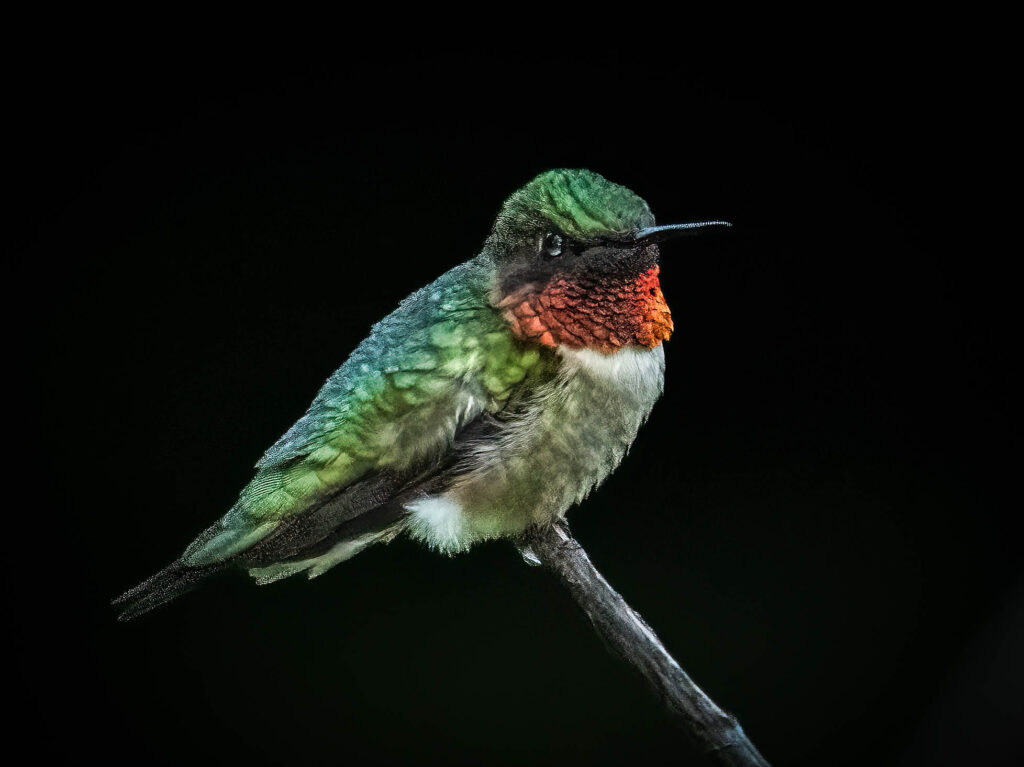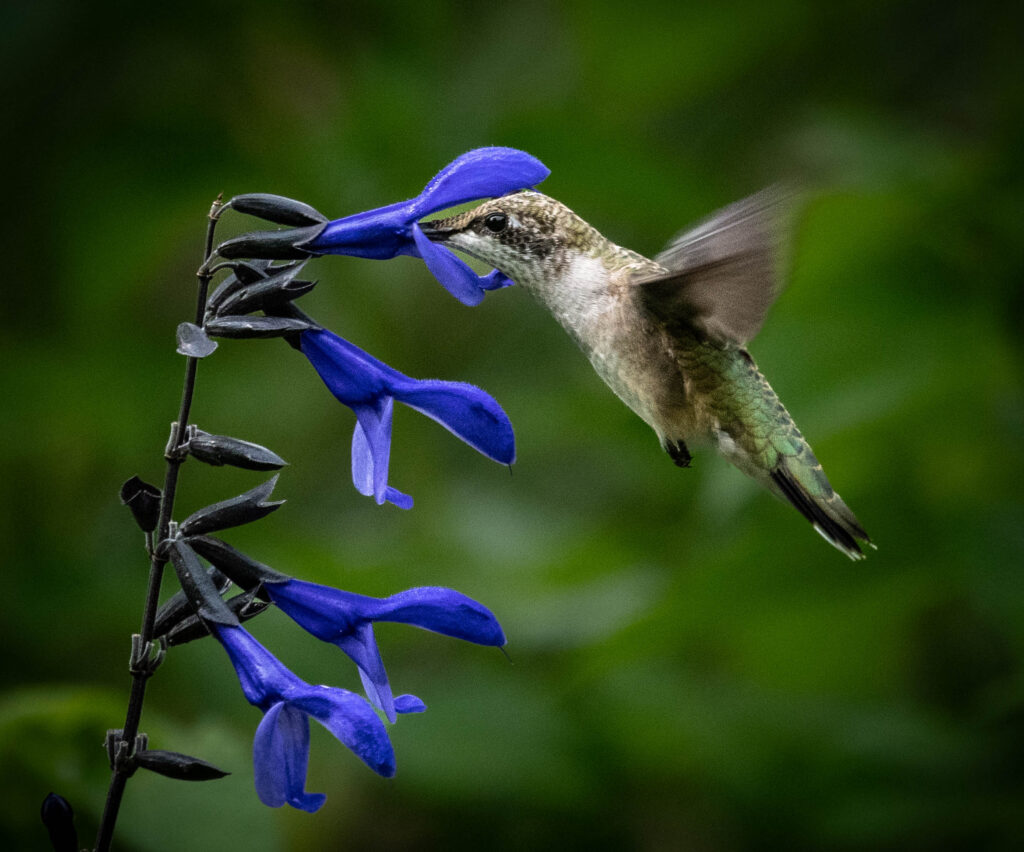Ruby-throated hummingbirds migrate north from their wintering grounds in Mexico and Central America. They arrive in Georgia in the spring between late March to early April. Migration depends on the weather and food sources.

We need to be prepared for the hummingbirds’ arrival by putting out feeders by mid-March. We should fill the feeders with a solution consisting of one part sugar to 4 parts water (this mirrors the sugar concentration of the nectar found in flowers). Boil the water for 2–3 minutes before adding sugar. Cool and store the mixture in a refrigerator until you can use it.
There is no need to add red food coloring. Hummingbirds do not prefer red nectar to clear but are attracted to red colored feeder parts. It is cheaper to make your solution than to buy a premixed solution.

Select a feeder that is easy to clean and does not drip. In warm weather, change nectar every 2–3 days or before it gets cloudy.
Periodically clean your feeders, making sure to remove mold and bacteria. The feeders can be easily cleaned soaking them in a solution of one part bleach or white vinegar and 10 parts water. Thoroughly rinse the feeders before using them again.
Ideally, keep at least one feeder up throughout the year.
The adult Ruby-throated hummingbird’s diet consists of not only nectar but also small insects. Mosquitoes, gnats, and fruit flies are some of the insects on the menu. Insects are also fed to baby hummingbirds.
The ruby-throated hummingbird is the only species of hummingbird known to nest to Georgia. These birds weigh as little as a first-class letter. Male hummingbirds have a bright red throat, while females have white-colored throats. The female builds the walnut-sized nest without any help from her mate. The process can take up to 12 days. The female then lays two eggs, each about the size of a black-eyed pea.
If you have a garden that attracts the hummingbirds, it can help increase the number of the hummers that visit. Here are some tips to get your garden ready for those little wings:

- Red buckeye, bottlebrush buckeye, trumpet honeysuckle, trumpet vine, cardinal flower, bee balm, jewelweed, fire pink, Indian pink, salvia, and Eastern red columbine are just some of the great native plants to consider in Georgia for a hummingbird-friendly garden.
- Ruby-throated hummingbirds favor tubular flowers because of the great amount of nectar the flowers produce and they do not have to compete with bees.
- Be sure to include plenty of native trees, shrubs, and climbers for shade to beat the heat, and include nectar plants and insect attractants that bloom during as much of the year as possible for a wildlife-friendly garden.
- Having a water feature, like a bird bath is vital.
Ruby-throated Hummingbirds face a variety of different human and natural threats across their Georgia range, these include:
- Building Collisions
- Habitat loss and degradation
- Pesticides and insecticides
- Outdoor Cats
We can help hummingbirds and all birds by planting native plants, eliminating pesticides and insecticides from our landscapes, installing bird-friendly glass and treating problem windows, and keeping our cats indoors. These will all go a long way towards conserving not just Ruby-throated Hummingbirds, but all bird species.
Simply put, Ruby-throated Hummingbirds are amazing. They excite all bird lovers. They inspire joy, happiness, and amazement and can be enjoyed endlessly at a feeder or in your yard.